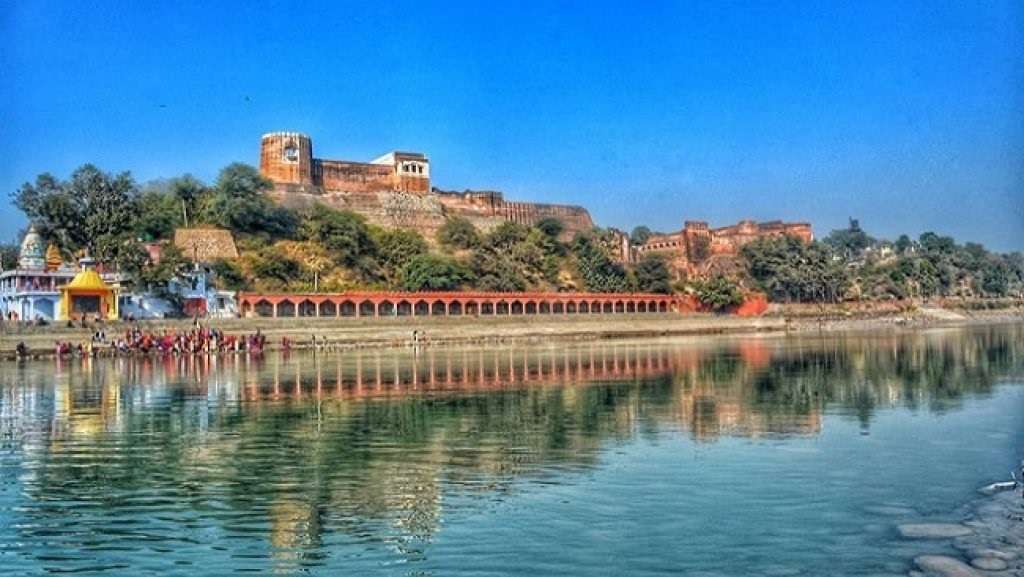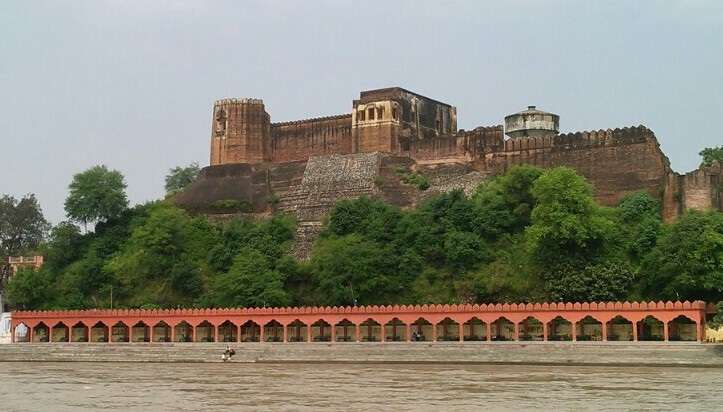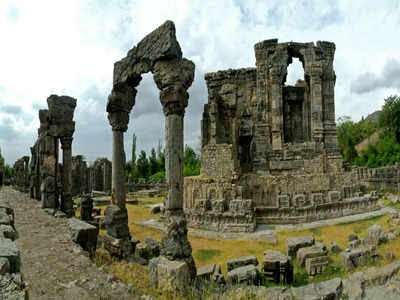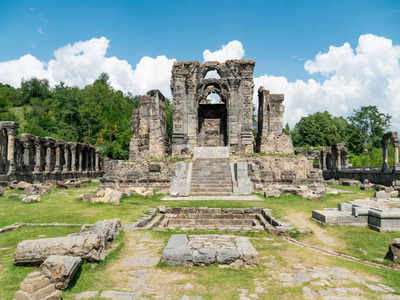HERITAGES SITES OF JAMMU & KASHMIR
Akhnoor Fort Jammu

Akhnoor Fort Quick Facts
Built in 1657-1672
BuiltPlace District Akhnoor, Jammu Kashmir,
Built in 1657-1672
Builtby Mian Tej Singh
Type Cultural,
Fort Architectural style Ancient Mughal Architectural
Style Architect Ustad Baig Kashmiri.
Akhnoor Fort Overview
The right bank of the Chenab River is home to the two-story Akhnoor Fort, which was constructed on a rock. Asikni was the fort’s previous name. This fort depicts a time in Jammu and Kashmir’s past. The Archaeological Survey of India (ASI) has been in charge of this fort since 1982, and the Monuments Act of 1958 designated it as a protected national monument.

Akhnoor Fort History
On the Chenab River’s right bank is where Akhnoor Fort is located. who’s original name was Asikni. Mian Tej Singh began building this fort in 1762 AD, but Raja Alam Singh of the Akhnoor district, who was the Raja’s heir at the time, oversaw its completion in 1802.
Raja Mian Tej Singh’s son was named Alam Singh. However, many archaeologists believe that this fort originated from the later destroyed Harappan era. Jia Pota Ghat, which is located on the right bank of Chandrabhaga, or what is now the Chenab River, in the Akhnoor district, is the pride of this ancient city, just as the Akhnoor Fort has a place of honour in history for its antiquity and historical significance.
Akhnoor Fort Interesting Facts
The Akhnoor fort has high and large fortification walls with bastions at equal intervals and crowned with warships. At the corners are two-storey watch-towers, which are crowned when the battles merge.The fort has two parts, which are adjoined by a wall with gates on the southern side towards the palace.
The entire palace is two-floors, and the walls facing the courtyard are decorated with arches, some of which have frescoes. The graffiti art on the walls of the fort is the oldest painting. In the historical records of the prehistoric era, pottery was first made, but after some time people started using clay to make paintings on the walls.
Both the northern side and the river banks lead to Akhnoor Fort’s entrance. Previously, a sizable portion of the fort was in ruins; however, conservation efforts are being made. At a historic location like Akhnoor Fort, three periods of history have been made visible. Earthenware with shades of red and grey, such as goblets, beakers, and jars, represents Harappa in the first phase. Early historical pottery is a sign of the second period, and Kushan artefacts are a sign of the third.
Martand Sun Temple

Martand Sun Temple
The Martand Sun Temple also known as Pandou Laidan, is a Hindu temple constructed in the eighth century CE that is devoted to Surya, the principal solar deity in Hinduism. Another name for Surya in Sanskrit is Martand. Lalitaditya Muktapida, the third king of the Karkota Dynasty, constructed it.
It was destroyed under the Muslim monarch Sikandar Shah Miri’s instructions, and is now in ruins.
In the Indian union area of Jammu and Kashmir, the temple is five miles from Anantnag.
It can be inferred from the remains and other archaeological discoveries that it was a superb example of Kashmiri building, which combined Gandharan, Gupta, and Chinese architectural styles. The temple is identified as Kartanda (Sun Temple) on the list of centrally protected sites.

Who was Lalitaditya Muktapida?
Lalitaditya, the third child of Durlabhak-Pratapaditya of Kashmir, was born in the year 699 AD. He came from Kashmir’s Nagvanshi Karkota Kayastha Dynasty. Since many years ago, Karkota Kayastha families have primarily served in the rulers of Kashmir’s armies. They were renowned for displaying extraordinary bravery in the battlefield.
They were given the name Sakhasena by the Kashmiri Kings in recognition of their enormous contributions. His older brothers were Tarapida and Chandrapida, and Lalitaditya’s birth name was Muktapida. In the year 724 AD, Muktapida seized control of the Kingdom of Kashmir. The Arabs had already taken over the provinces of Swat, Multan, Peshawar, and the Kingdom of Sindh at the same time that the western invasion of India had started.
Mohammad Bin Qasim, the Arab king, had already made threats to seize control of Kashmir and central India. He battled the Tibetan-ruled daradas, kabhojas, and bhuttas of Ladakh. Lalitaditya personally led the army into battle, vanquishing all Kings and establishing rule over the Ladakh areas. Yashovarman and Lalitaditya’s union prevented the Arabs from invading Kashmir.
Later, via Kabul, he invaded Turkestan. Beginning with the Rashtrakutas in Maharashtra, the Pallavas, and the Kalinga in the southern section, Lalitaditya obtained the majority of the locations in the west and south of India. Following his victory over the Chinese, he expanded his rule into central China. He was then compared to Alexander the Great after that.
The Kashmir Kingdom amassed vast money, which Lalitaditya used to build massive infrastructure, begin the construction of temples, and further the development of Kashmir. Lalitaditya was a fairly liberal monarch who respected all religions although adhering fervently to Hindu tradition. He was reportedly a highly sympathetic leader who listened to the views of his subjects. The Lalitaditya era came to an end in 760 AD when he passed away unexpectedly.

What are the Key Points of the Karkota Dynasty?
- Early in the seventh century, the Karkota dynasty rose to dominance in Kashmir and later expanded into northern India and central Asia.
- The Karkota dynasty was started by Durlabh Vardhana.
- The Hindu kings of the Karkota dynasty constructed magnificent temples in the capital city of Parihaspur.
- They supported Buddhism as evidenced by the stupas, chaityas, and viharas that have been discovered among the capital’s remains.
J&K History Updating.